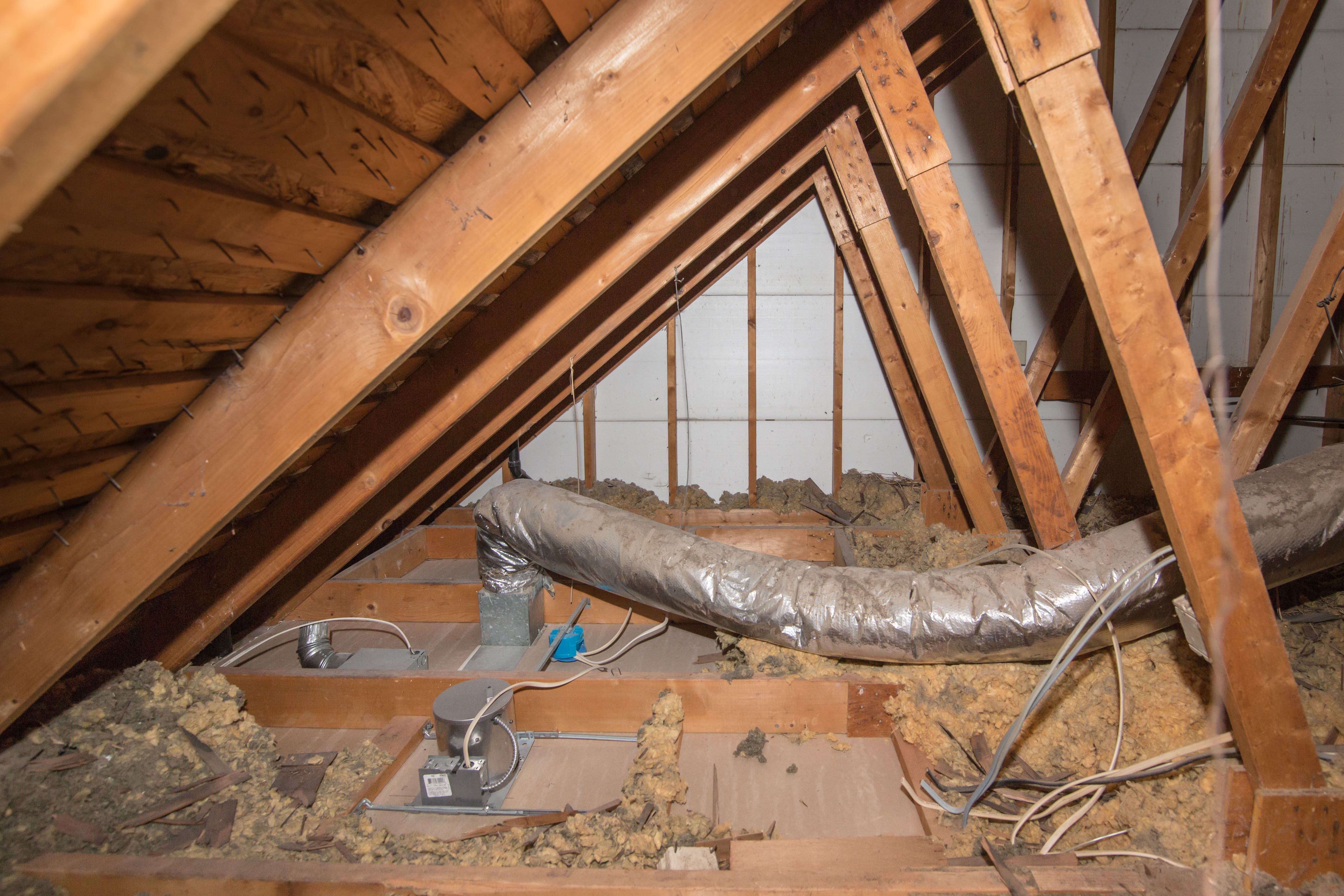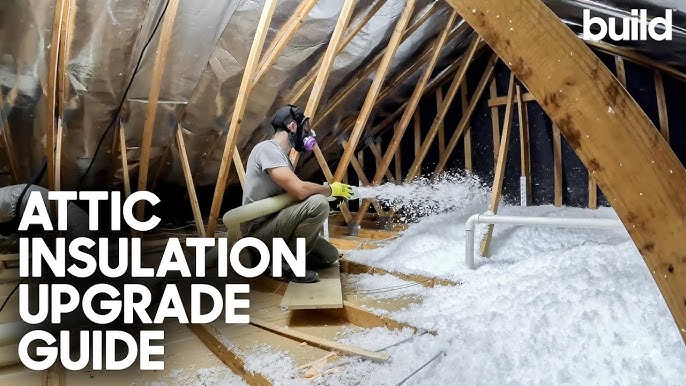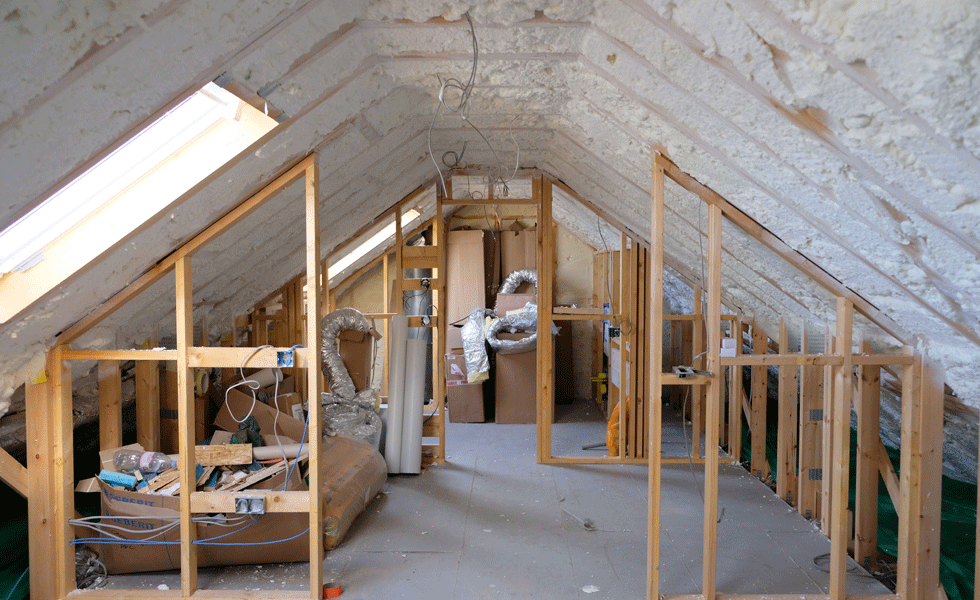Discover the Different Kinds Of Attic Insulation and Their Distinct Advantages for Your Home's Energy Performance

Fiberglass Insulation
Fiberglass insulation is just one of the most generally utilized products for attic insulation because of its outstanding thermal efficiency and cost-effectiveness. Composed of little glass fibers, this material properly catches air, producing an insulating obstacle that helps keep constant indoor temperatures. Its high R-value per inch makes it particularly efficient at standing up to heat transfer, which is critical for energy conservation in homes.
Setup of fiberglass insulation is reasonably straightforward, typically readily available in batts or loose-fill forms, accommodating different attic room arrangements. Additionally, it is immune and non-combustible to wetness, reducing the threat of mold and mildew growth. This durability contributes to its durability, making fiberglass a feasible lasting financial investment for home owners.
Moreover, fiberglass insulation is frequently made from recycled materials, which enhances its eco-friendliness. The material can also add to soundproofing, decreasing noise transfer between rooms. While it is important to use protective gear during installation to avoid irritation from the fibers, the overall benefits of fiberglass insulation, including power savings and ecological factors to consider, make it a popular choice for boosting attic room efficiency and promoting a comfy living atmosphere.
Spray Foam Insulation
Spray foam insulation is an extremely effective choice for attic room insulation, known for its superior air securing and thermal performance. This innovative insulation product is made up of a mix of isocyanate and polyol resin, which, when incorporated, broadens quickly to fill up gaps and dental caries in the attic room space. Its ability to stick to different surfaces ensures a continual obstacle against air leakages, significantly lowering warmth loss during colder months and warmth gain during warmer seasons.
One of the essential benefits of spray foam insulation is its high R-value per inch, which means it offers superb thermal resistance in a relatively slim application. This is particularly useful in attics where space is frequently minimal. Furthermore, spray foam can help decrease moisture build-up, decreasing the threat of mold and mold growth, which can be destructive to both the structure and interior air high quality.
While the initial price of spray foam insulation may be more than conventional alternatives, its long-term energy savings, combined with boosted convenience and improved home worth, make it a rewarding investment for home owners seeking improved power performance. Attic Insulation DFW. In general, spray foam insulation attracts attention as an efficient remedy for optimizing attic insulation
Cellulose Insulation

Cellulose insulation is a prominent option for attic insulation, mainly made up of recycled paper items treated with fire resistants. This environmentally pleasant option is recognized for its exceptional thermal performance, efficiently decreasing heat transfer in both summer and cold weather. The dense composition of cellulose permits it to load spaces and voids in attic room areas, providing a smooth barrier versus air leaks.
Among the considerable benefits of cellulose insulation is its capability to resist mold and mildew and insects, owing to the fire retardant therapies utilized during production. Furthermore, it boasts a high R-value per inch, which converts into superior power performance. House owners can expect reduced cooling and heating prices as a result of enhanced insulation.
Installment is commonly achieved with blowing loosened cellulose right into the wanted area, enabling for a fast and reliable procedure. This technique likewise minimizes disruption to the existing framework. Additionally, cellulose insulation has a fairly low environmental effect, as its manufacturing procedure utilizes recycled products, adding to sustainable building techniques.
Rock Wool Insulation
Amongst the various choices for attic insulation, rock wool, likewise understood as mineral woollen, stands out because of its remarkable thermal and acoustic performance. Made from natural or recycled materials, rock woollen is produced by melting rock and spinning it right into fibers, resulting in a product that provides superb insulation residential or commercial properties.
Among the significant advantages of rock wool insulation is its high R-value, which suggests its effectiveness in standing up to this article heat flow. This characteristic not only enhances power performance however additionally adds to keeping a comfy interior temperature level year-round. In addition, rock woollen is inherently fire-resistant, making it a more secure alternative for homes as it can endure high temperature levels without melting or releasing hazardous fumes.
Furthermore, rock wool insulation masters soundproofing capacities, efficiently reducing noise transmission between rooms and from outdoors sources. This makes it an excellent choice for homeowners looking for a calm living atmosphere. Furthermore, rock woollen is moisture-resistant, assisting to avoid mold and mildew growth and maintaining the structural stability of the attic room area. Generally, rock woollen insulation supplies a comprehensive option for boosting energy performance, security, and convenience in domestic setups.
Radiant Barrier Insulation
Radiant obstacle insulation acts as an effective service for decreasing heat transfer in attics, especially in warmer environments. This kind of insulation jobs by reflecting convected heat far from living rooms, thereby minimizing the quantity of warmth that gets in a home during heat - Attic Insulation DFW. Generally composed of a very reflective material, such as aluminum foil, radiant barriers are mounted in attics, dealing with the roof, where they can intercept incoming warmth from the sun
The main benefit of radiant obstacle insulation is its ability to reduced air conditioning costs. By showing warmth as opposed to absorbing it, radiant barriers can aid preserve an extra secure indoor temperature, minimizing the workload on air conditioning systems. This performance equates right into lower power costs find more info and increased comfort for homeowners.
In enhancement to power financial savings, glowing barriers can also contribute to improved interior air top quality. By reducing heat accumulation, they assist decrease humidity levels, which can avoid mold and mildew development and improve total air circulation. When mounted appropriately, glowing barrier insulation can be a very useful enhancement to any type of energy-efficient home, making it a worthy factor to consider for home owners looking description to enhance their attic room insulation approach.
Conclusion
In verdict, comprehending the numerous types of attic room insulation-- fiberglass, spray foam, cellulose, rock wool, and glowing barriers-- makes it possible for homeowners to make enlightened decisions concerning energy performance. By picking the proper insulation product, significant decreases in power costs can be attained, along with enhancements in indoor comfort.

In conclusion, understanding the different types of attic room insulation-- fiberglass, spray foam, cellulose, rock wool, and radiant obstacles-- enables house owners to make informed decisions concerning energy performance.